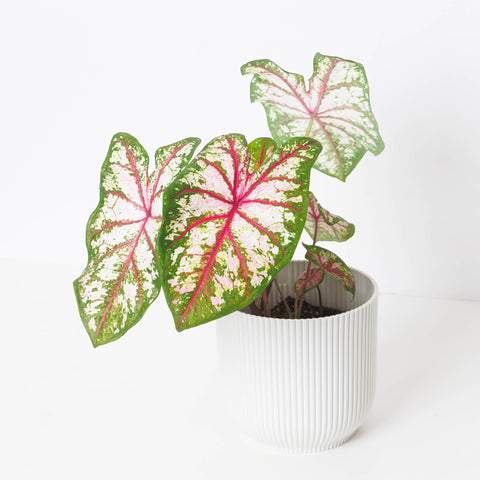Did you know that our name, House of Kōjō translates from Japanese as House of Plants? Since 2019, we’ve been deeply intrigued by the art of Japanese gardening. The month of April in Japanese culture holds significant importance, known as "Shinshun" in Japanese, which translates to "new spring".
This season of new beginnings inspires not only outdoor landscapes but also indoor spaces, making it the perfect time to infuse your home with the beauty and tranquillity of houseplants.
Here are three houseplant lessons we can learn from Japanese Gardening.
Love the imperfection with Wabi-Sabi Aesthetics
Wabi-sabi is a traditional Japanese art form that celebrates the beauty of natural living things being imperfect, impermanent, and incomplete. Even houseplants grown in tropical regions of the world undisturbed by humans can possess blemishes and flaws, but there’s still something to love about it. Appreciating the unique character of each leaf and allow your plants to grow in their natural form. In a world where everything has to be Insta-worthy, why not try embracing imperfection and simplicity in your houseplant collection this spring and save one of our rescue boxes?
Opt for Minimalistic Arrangements
Instead of overcrowding your space with too many plants and feeling overwhelmed with plant chores (yes, this is a thing!), focus on creating serene and balanced compositions with a select few favourites. You can even select pots made from natural materials such as clay, and arrange your plants with careful attention to negative space. To go one step further, why not add other natural such as smooth stones, small figurines, or bonsai trees like those seen in Japanese Zen gardens? This will add interest and tranquillity to your indoor space.

Adopt a Mottainai Mindset
Mottainai is a Japanese term that conveys a sense of regret for wasting resources and a commitment to mindful consumption. You can apply this principle to your indoor garden by practising responsible plant care techniques, such as watering your houseplants with fish tank water or rain water, and using organic materials to feed your houseplants. You also can repurpose household items as planters or DIY plant accessories to reduce waste and minimise your environmental footprint.
Let us know which of these lessons you'll be encorporating into your houseplant collecting hobby below! 🤍






Leave a comment